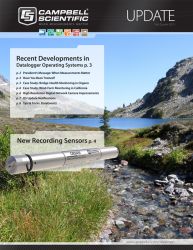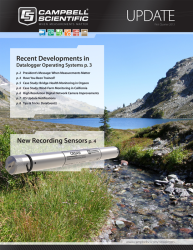
Science is about understanding cause and effect. Metrology is the science of measurement. A metrology technique that has proven useful in electronic measuring instruments combines analog components such as a voltage reference and a thermal resistive device, and digital electronics using memory and a microprocessor. An initial calibration matrix characterizes the response of the voltage reference at different temperatures, and the characterization is stored in memory and subsequently retrieved and applied by the microprocessor to provide a temperature-corrected or -compensated reference. Because most transducers are sensitive to temperature, this technique is often applied to achieve temperature-compensated measurements of such things (besides voltage) as pressure, or wind (using sonic anemometry), or even concentration of a target gas with an analyzer operating in outdoor, ambient conditions. This innovative technique, applied to instrument design and manufacture, has enabled a broader array of sensing technologies to be used for environmental measurement, and it has also enabled instruments to operate in the ambient environment that would otherwise be confined to the laboratory. Additional benefits include improved accuracy of instruments used in ambient field conditions and a lower cost for sophisticated instruments with the use of more-tolerant reference components.
The product family of pressure transducers manufactured by Campbell Scientific, Inc., (CS451 and CS456) including the new CRS451 and CRS456 featured in this newsletter, are examples of products that use the above-described temperature-compensating calibration technique. A high-precision pressure calibrator, with its own documented and maintained National Institute of Standards and Technology (NIST) traceability, is used at a stable room temperature, adjacent to a chamber containing a batch of transducers of the same pressure range being calibrated. The chamber then undergoes a temperature excursion in steps. At each temperature step, the pressure calibrator undergoes its own step change of several pressures from zero to the full scale range of the transducers being calibrated. The temperature response characterization thus generated for each unit undergoing calibration is then stored in memory of the corresponding sensor. Campbell Scientific has made a substantial investment in this process to assure integrity of instrument calibration, and to automate the process for efficiency of product manufacture.
Other benefits from this calibration process include operating time for instrument burn-in, and verification of operation and accuracy at temperature extremes. The reliability of electronics still depends on myriad connections of conductors using solder or some other form of metal-to-metal bonding, or with spring contacts. Temperature excursion exercises these conductive joints and usually exposes those prone to failure.
We at Campbell Scientific are pleased to offer, built in to our instruments, the benefits of modern metrology techniques, as well as the proven manufacturing methods that yield products that perform in the field.

